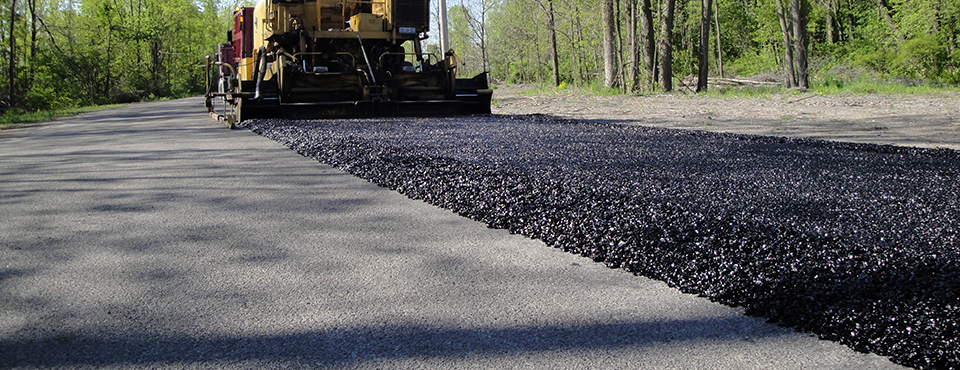The Science Behind Cold Mix Asphalt: A Failure of Its Elements
Cold mix asphalt is a complicated composite product made up of various elements, each thoroughly chosen to offer a certain purpose in the overall performance of the mixture. Additives additionally boost its buildings, making the scientific research behind cold mix asphalt an interesting subject that loses light on the detailed balance required for ideal performance.
Cold Mix Asphalt Make-up

Cold mix asphalt structure differs depending on the specific application and desired buildings. Commonly, it includes bitumen emulsion, accumulations, water, and ingredients. Bitumen solution plays an important role in cool mix asphalt, serving as the binder that holds the mix with each other. This solution is a dispersion of asphalt in water, permitting simpler application at reduced temperature levels compared to hot mix asphalt.
The aggregates utilized in chilly mix asphalt vary in dimension and gradation based upon the desired attributes of the final mix. They offer the architectural toughness and stability to the asphalt mixture. Coarser accumulations enhance the mix's resistance to deformation, while finer aggregates improve the general workability and compactability.
Water is one more vital element in cool mix asphalt, assisting in the emulsification process and allowing for proper finish of the accumulations. Ingredients such as anti-stripping agents or fibers might likewise be included to improve the mix's durability and performance in certain conditions. angle parking. The cautious balance of these elements is essential in creating a high-grade cold mix asphalt item
Accumulations in Cold Mix Asphalt
Comprising a critical element of cold mix asphalt, aggregates offer as the fundamental element that offers structural integrity and support to the asphalt blend. Aggregates are granular products such as sand, gravel, crushed stone, or recycled concrete that are blended with bitumen to create cold mix asphalt.
In cool mix asphalt, aggregates function as a skeleton that supports the bitumen and other additives, assisting to disperse lots and give stability to the sidewalk. The dimension and gradation of aggregates influence the toughness and resistance of the asphalt mixture to different stress and anxieties, including website traffic lots and ecological factors. Effectively chosen and well-graded aggregates contribute to the long life and efficiency of chilly mix asphalt pavements by improving their resistance to rutting, cracking, and wetness damage.
Bitumen and Its Duty
Aggregates create the architectural foundation of chilly mix asphalt, with asphalt playing a pivotal function in enhancing the communication and resilience of the asphalt combination. Bitumen, a sticky, black, and very thick fluid or semi-solid have a peek at this site kind of oil, works as the binder that holds the aggregates with each other. Its adhesive homes permit bitumen to efficiently coat and bond with the surface area of the accumulations, forming a cohesive mix that can hold up against differing climate condition and website traffic lots.
Asphalt adds dramatically to the versatility and water resistance of cold mix asphalt. By creating a waterproof layer, asphalt aids stop water breach right into the pavement structure, minimizing the threat of damages triggered by freezing and thawing cycles. Furthermore, asphalt improves the fatigue resistance of the asphalt blend, improving its sturdiness and durability.
Additives for Enhanced Performance
Exactly how can additives add to improving the performance of cool mix asphalt? Additives play a critical duty in enhancing the overall top quality and efficiency of cold mix asphalt. These specialized elements are thoroughly picked and included to the mix to improve different residential properties such as workability, longevity, and resistance to ecological aspects.

An additional vital additive is fibers, which are frequently made use of to boost the tensile strength and resilience of chilly mix asphalt. Fibers aid stop split propagation and boost the total architectural honesty of the sidewalk.
In addition, ingredients like anti-stripping agents are used to boost the bond between the asphalt binder and accumulation fragments, minimizing the threat of dampness damages. By carefully selecting and integrating ingredients, engineers can customize the chilly mix asphalt to satisfy certain efficiency requirements and ensure lasting pavement performance.
Water and Its Effects
Water plays a significant role in the performance and resilience site link of cold mix asphalt sidewalks, affecting numerous essential elements of its architectural stability and durability. Furthermore, water infiltration can result in the removing of asphalt from the accumulated fragments, reducing the pavement's resistance to traffic loads and environmental tensions.
Icing up and thawing cycles can intensify these concerns by causing the trapped water within the sidewalk to expand and contract, additional jeopardizing its structural security. The visibility of water can also facilitate the growth of plants within the pavement, leading to added damage and degeneration over time. To mitigate these effects, proper drainage systems and normal upkeep practices are important to make certain the long-term performance of cool mix asphalt pavements in different ecological conditions.
Conclusion
Finally, the elements of cool mix asphalt, consisting of aggregates, asphalt, additives, and water, Related Site play a vital function in establishing the efficiency and resilience of the mixture - cold mix asphalt. Recognizing the science behind these parts is important for creating a high-grade chilly mix asphalt that can withstand ecological aspects and provide lasting structural strength. By thoroughly picking and proportioning these components, designers can make certain the successful application of chilly mix asphalt in various building tasks
Comments on “Cold Mix Asphalt Solutions: Easy and Reliable Repairs”